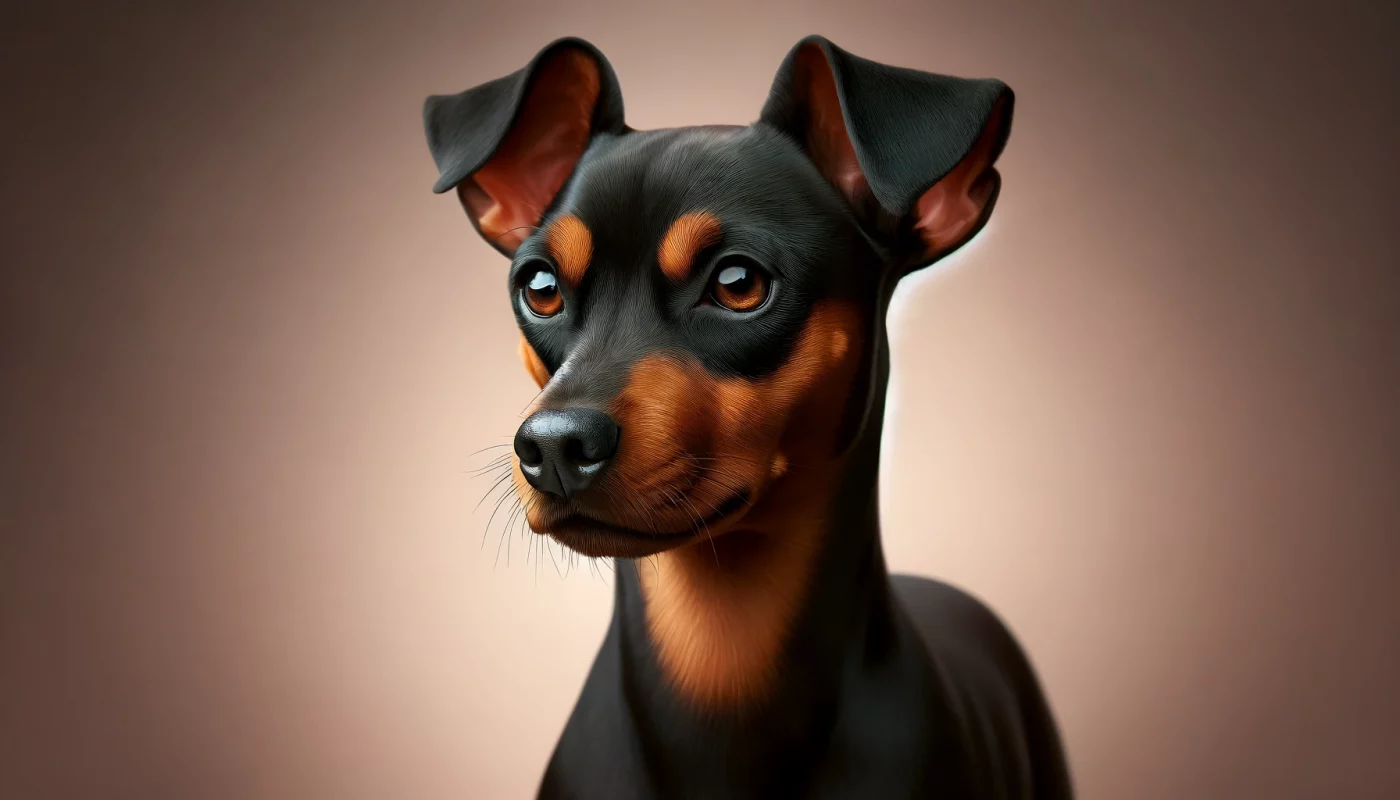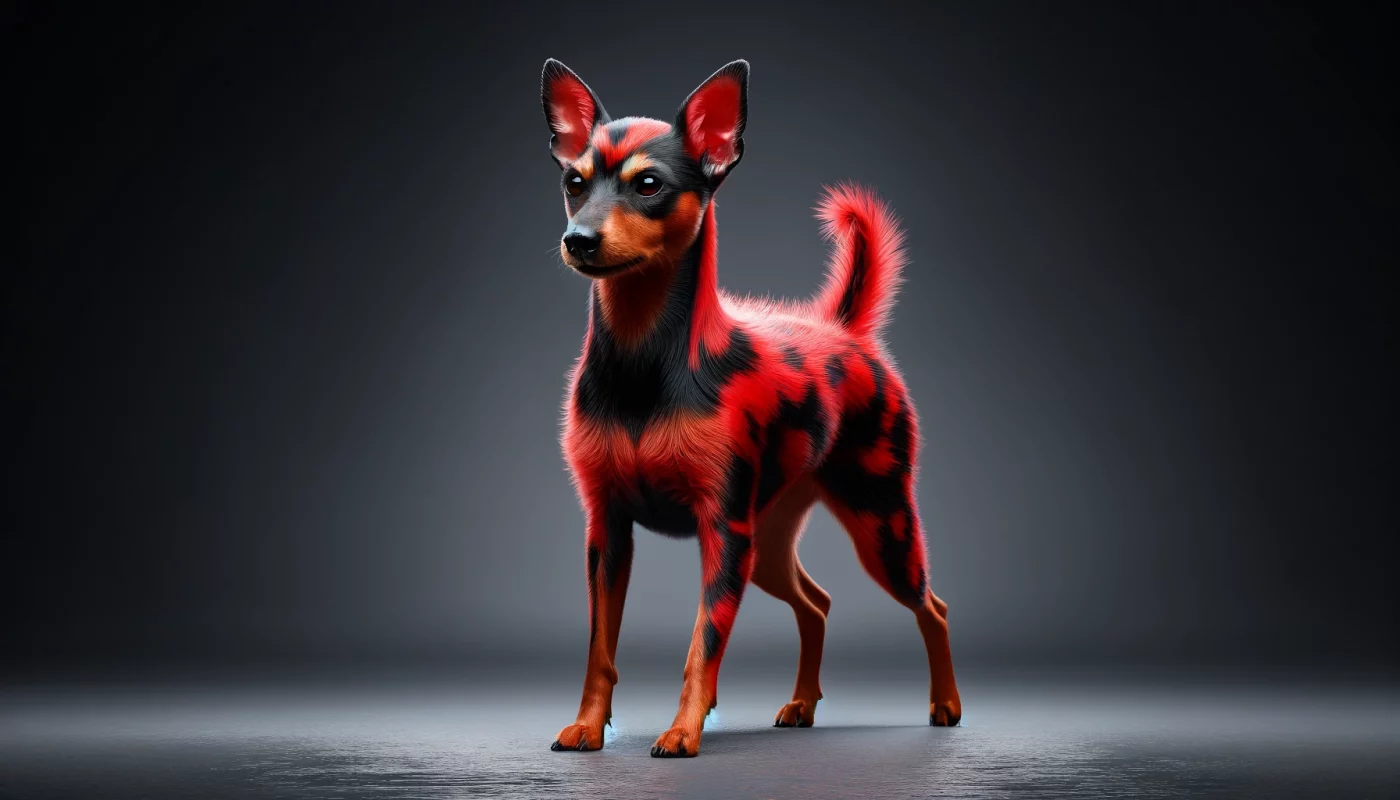Miniature Pinschers, often affectionately referred to as “Min Pins,” are a breed as notable for their spirited demeanor as they are for their striking appearance. These diminutive dogs, originally bred in Germany to hunt vermin, are not just smaller versions of Dobermans as many mistakenly believe; they are a breed entirely their own, with a boldness that defies their size. One of the most enchanting aspects of Miniature Pinschers is their array of coat colors, each carrying its unique charm and set of genetic markers. This article explores seven stunning color variations of the Miniature Pinscher, showcasing the diversity and beauty of this proud breed.
1. Black and Tan

The black and tan Miniature Pinscher is perhaps the quintessential look for this breed. This coloration features a glossy black base with sharply defined tan markings on the eyebrows, muzzle, chest, and legs. The contrast not only enhances the sleek, compact build of these dogs but also accentuates their expressive, sharp eyes. Black and tan is a dominant color combination that mirrors the Min Pin’s assertive personality, making it a perennial favorite among breed enthusiasts.
2. Chocolate and Rust

Chocolate and rust Miniature Pinschers present a captivating rich brown hue complemented by rust-colored markings. This variation results from a recessive gene, making it less common than the classic black and tan. The warm, deep tones of the chocolate coat highlight the lithe movements and refined features of the breed, offering a stunning visual that contrasts beautifully against the vibrant rust markings. This color combination is especially striking in sunlight, where the chocolate hue seems to glow with a burnished intensity.
3. Red

Solid red Miniature Pinschers are a vibrant feast for the eyes. These dogs sport a uniform reddish-brown coat that can vary from a light, almost orange hue to a deep, rich mahogany. The absence of contrasting markings gives the red Min Pin a sleek, streamlined look that emphasizes its agile form. The coat’s singular color shines brilliantly, reflecting the lively and fiery spirit of the breed—a truly eye-catching variant that appeals to many dog lovers.
4. Stag Red
Stag red Miniature Pinschers are named for their unique coat pattern, which resembles the fur of a deer. This variation features a red base intermingled with black hairs, giving it a speckled, almost wild appearance. The interplay of colors adds depth and complexity to the dog’s appearance, reflecting the breed’s dynamic nature. Stag red is less common than some other colors, making it a prized choice for those looking to own something truly distinctive in the world of Min Pins.
5. Blue and Tan

The blue and tan variation in Miniature Pinschers is a result of a dilution gene affecting the black coat, transforming it into a striking blue-grey. Accompanied by tan markings, this coloration is both rare and mesmerizing. The diluted blue shade provides a softer contrast to the tan than black, creating a more subdued but equally elegant appearance. However, potential owners should be aware that this beautiful color might come with health considerations, such as skin issues.
6. Fawn (Isabella) and Tan

Fawn, also known as Isabella, and tan Miniature Pinschers exhibit a pale taupe or beige base coat with delicate tan markings. This color results from a further dilution of the chocolate gene, resulting in a rare and exquisite hue that is soft yet striking. The fawn shade underscores the refined features of the breed, making these dogs stand out for their subtle, yet impactful appearance. The rarity of this color adds an exclusive allure to the already charismatic Min Pin.
7. Cream

Cream Miniature Pinschers are among the rarest and most ethereal-looking within the breed. These dogs display a light cream to almost white coat that captures the essence of their delicate features. Lacking the darker facial markings typical of most other colors, cream Min Pins have a soft, angelic quality. The rarity and striking visual appeal of this color make it a sought-after variation for those wishing to showcase a truly unique Min Pin.
In conclusion, the Miniature Pinscher is a breed that wears its variety of colors as proudly as it does its spirited personality. From the classic black and tan to the rare and enchanting cream, each color variation highlights different facets of the breed’s unique character. Whether one prefers the boldness of a stag red or the subtlety of a cream, the Miniature Pinscher offers a palette to meet every preference, making it not just a pet, but a statement of style and individuality. This diversity not only enhances the breed’s aesthetic appeal but also adds to the depth of choice for potential owners, ensuring that each Miniature Pinscher can find a home as distinctive as its coat.
 Toledo, United States.
Toledo, United States.